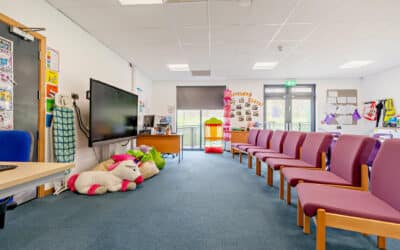TG Escapes Blog
Building Design for Eco Classrooms
To learn and experience the outdoor environment you have to be out in it. Our climate dictates that we can’t sit outside under a fig tree in the shade all year, so where possible, ensure all the elements of the design is based around the philosophy of minimising the barriers between inside and out to maximise the feeling of being part of nature and the good environmental citizenship that this will develop. We’ve compiled some top tips to help you get the most from the design of your eco-classroom:
- To heighten the feeling that children are in a special place and not inside the main body of the school, the position of your outdoor learning classroom should ideally be slightly detached from the main school as a free standing pavilion set within whatever outdoor open space the school grounds affords.
- To allow both the physical flow of children from inside to out as well as letting the natural world be viewed from inside include large full height screens and doors.
- Natural light and sunshine is essential to how we all feel. The use of sunpipes brings controlled bright light inside to replicate daylight and lessen the requirement to use artificial light and the energy these consume.
- You can provide a sheltered environment to continue outdoor learning when otherwise internal learning only is possible by using covered canopies adjacent to glazed screens and doors.
- Every element of the building designed for outdoor learning can be part of the education experience from the recycled insulation that keeps the building warm to percussion taps that use the minimal amount of water.
When designing your eco-classroom, it’s important to consider every aspect of the building to make it as ‘eco’ as possible, here are some tips of how to make your eco-classroom as environmentally friendly as possible:
- Ensure all energy using appliance are AA rated to minimise energy use & where possible have a smart meter to show how the use of the building by occupants can be effected as part of the learning experience.
- Use smart lighting in conjunction with good daylighting to minimise energy use. The building tells its occupants when they need extra light to help them learn.
- Design with natural materials wherever possible and minimise the requirement for high embodied energy products such as steel and concrete.
- Where possible use technologies that harness the power of the sun to heat water or generate electricity.

About the author
More posts from our blog
TG Escapes partner with Class of Your Own’s ‘Adopt a School’ Scheme
We're thrilled to announce a landmark collaboration between Stratford upon Avon School, a beacon of the Design Engineer Construct! (DEC) Learning Programme, and TG Escapes. This partnership fostered through Class of Your Own’s 'Adopt A School' scheme, marks a...
Student engagement day at Beacon Hill School
Two members of the team recently had the privilege of showing students and staff around our latest project nearing completion, at Beacon Hill School in Wallsend. The school is North Tyneside’s specialist provision for children with severe learning difficulties that...
The Design Essentials of a Modern SEND Classroom
There is a desperate need for quality new buildings across UK schools, but special schools are in a particular crisis thanks to rising needs and inadequate funding, with an urgent need for buildings that offer children with complex needs a comfortable and safe space...



